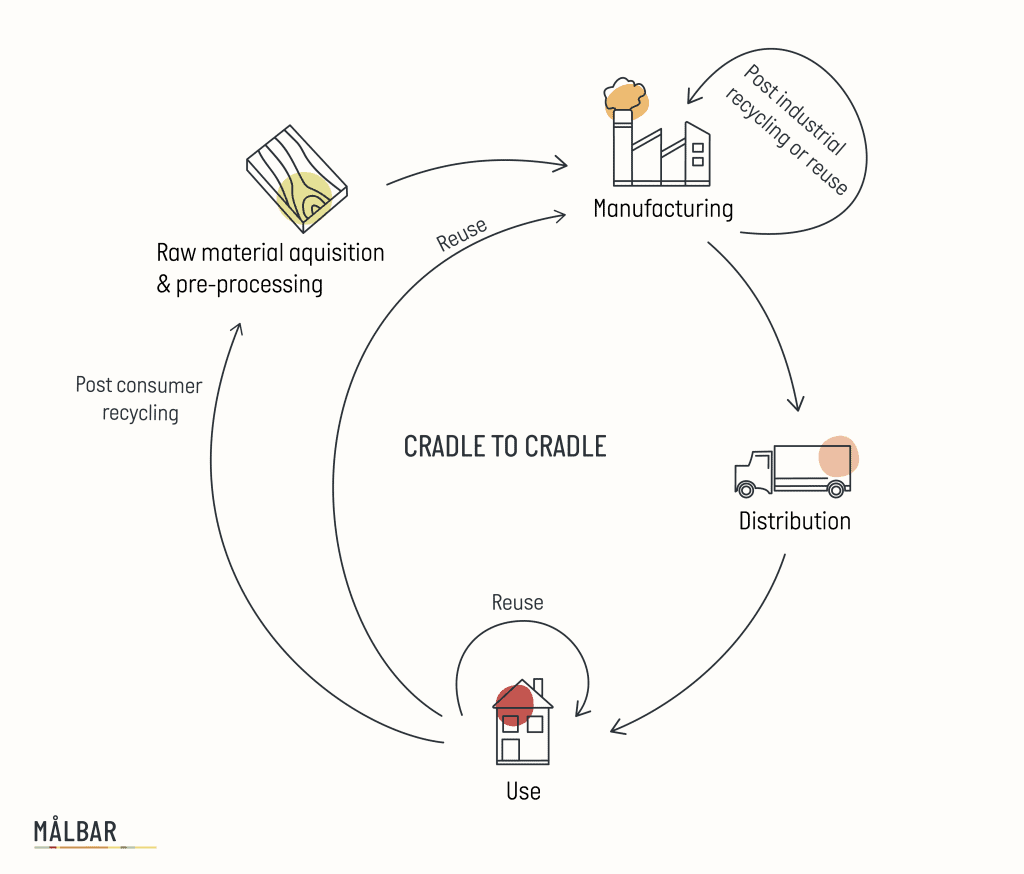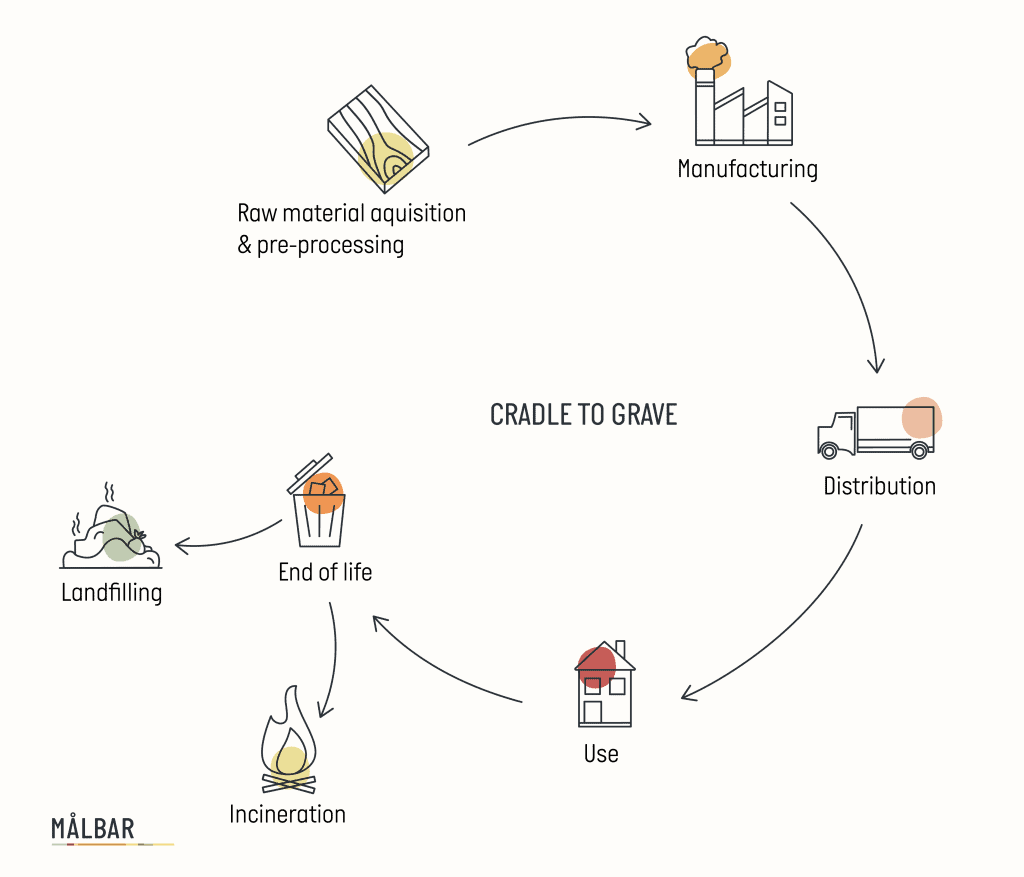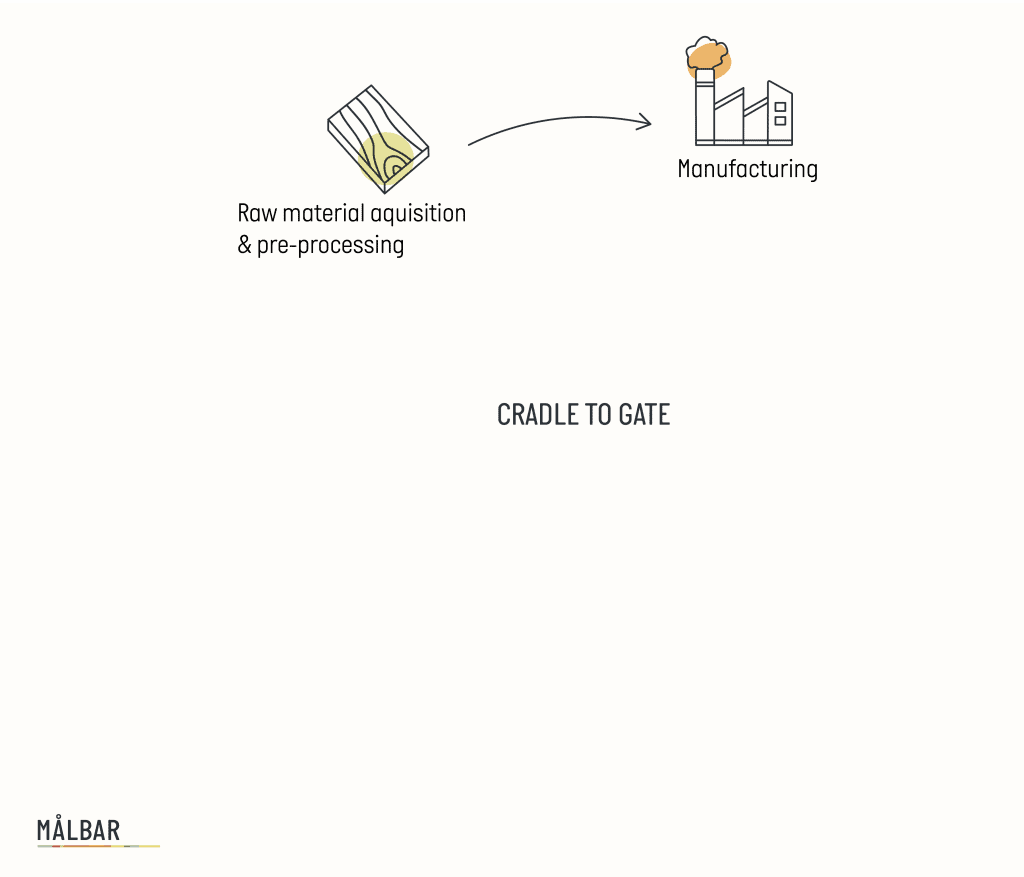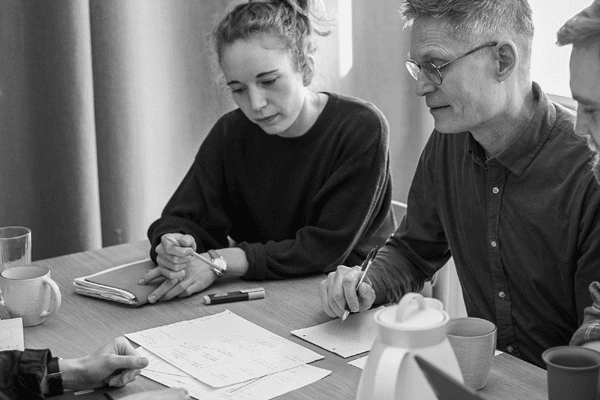
With our continuous focus on sharing our knowledge about responsible practices, we want to shed some light on three ways you can outline the boundaries of a lifecycle assessment. These are called System Boundaries, and they define how many of the life cycles stages you include in an LCA.
We aim to stress the importance of asking “How did you get this result?” when you are presented with climate impact numbers on products and services. So that you know how you can compare it with other results.
The terms Cradle to Cradle, Cradle to Grave, and Cradle to Gate are widely used in environmental communication. They often reflect different approaches to sustainability and product life cycles.
Cradle to Cradle
- An LCA following the cradle-to-cradle model includes all product lifecycle stages and assumes that the product is fully reused and recycled at end-of-life. This means, that there’s no disposal-phase in the traditional sense. Products either return to nature by being biodegradable or become part of a continuous loop of reuse and recycling. Products calculated this way should ideally be designed to be fully circular.
- The key principle here is circularity, meaning that resources are continuously cycled back into the production system. The cradle (where the product starts) is connected directly to a new cradle (where it goes when it’s no longer needed).

Cradle to Grave
- This LCA model follows a linear product life. It also includes all lifecycle stages but assumes that the product ends it life without being recycled.
- Products are created (cradle), used, and then disposed of (grave). Once a product reaches the end of its life, it ends up in a landfill, incinerator, or another disposal method, often creating waste or pollution.

Cradle to Gate
- In this model, the system boundary is set at the factory gate.
- In practice, this means that only the process from the creation of raw materials (cradle) to the point where the product leaves the factory gate (before distribution, retail, or end-user consumption) is included in the LCA. So here, the emissions coming from use phase and disposal phase aren’t accounted for.
- This model focuses on the production phase of a product.

Comparing LCAs
When you want to compare one LCA to another, it is very important that you are aware of the different approaches within the LCA work. If you don’t know the system boundaries of each calculation, you risk comparing apples with cucumbers. In other words, you cannot compare the results of two LCAs that follow different approaches or don’t include the same lifecycle stages.
One important factor to pay attention to when you wish to compare two LCAs, is whether the whole lifecycle (cradle to cradle and cradle to grave) has been included in the calculations or if only parts of the product life cycle have been measured (cradle to gate). Furthermore, it is essential to know what scenario is used to calculate the end-of-life. If a product or parts of a product have the potential to be circular, the LCA might include reuse and recycling practices. A similar LCA might assume a scenario where the whole product is disposed of.
Målbar’s screening tool allows to calculate the full lifecycle of a product from its cradle to its grave, including recycling together with incineration and landfilling, because the end-of-life phase is based on country-specific data. In case a product is certified to be fully recycled or reused, our LCA consultants can make an LCA following the cradle to cradle approach.
Even though products are designed to be fully circular, this is not always what happens when the use-phase is over. So, we must look at reality and calculate on what actually happens to the products we no longer use. These are the data that Målbar uses.


